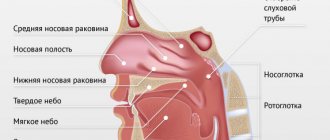Bronchial cancer is a neoplasm that is malignant. It appears initially in glandular tissue, epithelium. Typically, this disease is diagnosed in the older generation, who have already crossed the age limit of 50 years. Malignant neoplasms occur in people who smoke (80%). They are noted in those parts of the bronchial tree that are located above. This is where ventilation is best. Carcinogens contained in the air can provoke cell transformation and the appearance of the first symptoms of bronchial cancer.
Types of bronchial cancer
When it comes to histological classification, the following types of bronchial oncology are distinguished:
- small cell carcinoma. It usually occurs in people who smoke. This disease is particularly aggressive, spreads rapidly and is difficult to treat. Of all types of bronchial cancer, small cell cancer is diagnosed in 12% of situations;
- bronchial squamous cell carcinoma. This type can be noted in 80% of cases. The risk of developing such a disease is determined in smokers;
- adenocarcinoma. This type is most often found in people who do not smoke, mostly women. Such tumors are smaller and can develop in those parts of the lung that are peripheral;
- large cell bronchial cancer. It contains large undifferentiated cells.
Highly differentiated and poorly differentiated tumors are distinguished, it all depends on how much the properties of a normal tumor have been lost. The second option is more aggressive.
When selecting treatment for bronchial cancer, it is important to consider where the tumor foci are located. This indicator provokes the division of cancer into:
- central. The neoplasm in this disease is located in the bronchi of the 1st-3rd order;
- peripheral. Here the tumor is located in the bronchi, which are smaller.
Types of respiratory tract cancer
There are several types of respiratory tract oncology depending on the organ in which the tumor has formed. Each of them has its own symptoms, manifestations, rate of development, treatment, and prognosis. Also classified by type are small cell and squamous cell carcinoma of the upper respiratory tract. In the first case, the disease progresses very quickly, and the prognosis for recovery is unfavorable. The second option is characterized by a slow flow, so the forecasts in this case are more optimistic.
Throat cancer
The most aggressive cancer of the respiratory tract are throat diseases, as they provoke the rapid development of metastases.
Symptoms of respiratory tract cancer:
- mouth ulcers that do not heal for a long period of time do not always cause pain;
- lump in the throat;
- discomfort when swallowing;
- throbbing ear pain;
- voice change;
- bad breath;
- bloody saliva with parts of the tumor (in the last stages).
Laryngeal cancer
Symptoms of respiratory tract oncology in the initial stages are similar to laryngitis and chronic smoker's cough, which is why early diagnosis is not always successful without additional measures. Most often, respiratory tract cancer develops after 40 years of age, so annual visits to specialists should not be neglected.
Symptoms:
- pain during swallowing;
- change or complete loss of voice;
- violation of the swallowing reflex;
- tooth loss, bad breath (late stages).
Trachea cancer
This oncology of the upper respiratory tract is rare, so its causes are less studied than other types. It has an unfavorable outcome, since the tumor blocks the lumen of air supply and the patient suffocates even before the appearance of metastases.
Symptoms:
- discharge of bloody sputum;
- hoarseness of voice;
- prolonged cough;
- attacks of suffocation at rest.
Lungs' cancer
The most common cancer of the respiratory tract, the main causes are smoking, working in hazardous industries, and frequent chronic diseases of the respiratory tract.
Symptoms:
- paroxysmal cough;
- discharge of bright yellow or green sputum, in some cases mixed with blood;
- dyspnea;
- systematic chest pain spreading to other parts of the body (in the final stages).
Stages of bronchial cancer
There may be different stages of bronchial cancer, it all depends on the spread of the tumor. But there is its own TNM classification, which is generally accepted. Each letter has its own designation:
- T – the primary focus, its size, is also determined by how much the cancer has grown into the tissues that are nearby;
- N – lymph nodes and regional nodes are affected;
- M – there are metastases that are distant.
These indicators help determine the stage of bronchial cancer.
Reasons for the development of the disease
Due to the fact that changes occur inside a normal cell, it becomes tumorous. It is not possible to say 100% why defects arise at the genetic level that provoke transformation of the bronchi. However, there are factors that increase the risk of developing bronchial cancer.
Typically, bronchopulmonary cancer occurs if a person has a bad habit such as smoking. The likelihood of the presence of the disease depends on such factors as the brand of cigarettes, the age at which smoking began, the number of cigarettes smoked per day, and the length of time the smoker has been smoking. But it’s not just active smoking that poses a danger. Being a passive smoker is also dangerous. In the case of constant stay with people who smoke, the risk of illness increases several times.
Other risk factors for bronchial squamous cell carcinoma include the following:
- hazards due to their profession - employees of factories where fiberglass, glass, and cement are produced. Over time, symptoms of bronchial cancer may occur;
- contact with asbestos, certain types of volatile substances, reagents that are classified as chemical;
- Radon was released into the air. This is a radioactive gas that, after the decay of uranium, enters the air from the soil.
Etiology and risk factors
In 8 out of 10 cases, the cause of lung cancer is smoking, including passive smoking.
But the disease is also found in non-smoking people. Risk factors include hereditary predisposition, regular exposure to volatile carcinogens, excessive chest radiation exposure, genetic disorders, certain viruses, alcohol abuse and malnutrition. At risk:
- smokers over 40 years of age;
- alcoholics;
- patients with chronic obstructive pulmonary diseases;
- patients with oncological diseases of the upper respiratory tract and lungs in anamnesis;
- people with a family history;
- people who regularly come into contact with asbestos, radon, arsenic, dust;
- people with low social status.
Factors independent of a person include age over 50 years, endocrine disorders, and chronic lung diseases.
Symptoms and signs
Signs of bronchial cancer at an early stage may be completely absent. A tumor can be diagnosed and seen accidentally during fluorography. Specialists from the Cancer Society in America suggest that people who have a long history of smoking regularly undergo computed tomography. With the help of periodic examinations, the presence of bronchial cancer can be determined in time. This kind of research is called screening.
The following symptoms of bronchial cancer are also noted:
- chronic persistent cough;
- presence of sputum with bloody discharge;
- there is shortness of breath while moving. This sign of bronchial cancer should alert a person;
- pain that occurs inside the chest.
A situation often occurs when there are symptoms of bronchial cancer, but it is not possible to recognize the disease. The clinical picture may resemble pleurisy, pneumonia, which proceeds sluggishly, etc. You should be careful about your own health. If there are signs of bronchial cancer that have been bothering a person for quite some time, you should immediately go to a specialist to be examined and treated.
Symptoms of the disease
The symptoms of the disease are determined by the type of affected bronchus, the rate of tumor growth, the degree of prevalence of the tumor and the histological structure of the tumor tissue. Central bronchial cancer
characterized by early symptoms, one of which is attacks of dry, hacking cough. During coughing attacks, whistling sounds are clearly heard, cyanosis and sputum production mixed with blood cells are observed. Hemoptysis is caused by the breakdown of a cancerous tumor and is observed in most cases. Patients who have pleural damage as a result of the development of cancerous pleurisy experience pain in the chest area.
When the airway is completely blocked, followed by inflammation of the non-ventilated part of the lung, obstructive pneumonitis occurs, characterized by a strong cough and copious sputum production. Patients often experience attacks of fever, shortness of breath, physical weakness, and psychological depression. Such symptoms develop as a result of oxygen deficiency.
Bronchial cancer
, discovered in the later stages of development, is accompanied by superior vena cava syndrome associated with circulatory disorders in the upper parts of the body. The symptoms in this case are pronounced and clearly visible. As a result of a violation of the outflow of blood, the patient experiences swelling of the veins in the neck, swelling of the upper limbs and chest, and a bluish complexion appears. A sharp decrease in voice timbre and the appearance of hoarseness are associated with tumor damage to the vagus nerve. Pain in the heart indicates the penetration of cancer cells into the pericardium.
Bronchial cancer
in an advanced state, it is caused by the spread of metastases to regional lymph nodes; in the patient’s body, hematogenous and lymphogenous metastasis is observed in the liver, adrenal gland region, brain and bone tissue.
Diagnosis of bronchial cancer
How to check the lungs and bronchi for cancer? In most cases, the tumor is determined by radiography. MRI, CT will help determine the size of the tumor, its location, foci, their number, the degree of germination into nearby tissues, and the stage of bronchial cancer. Bronchoscopy is an endoscopic examination using a bronchoscope. This is a tool that resembles a long hose and is quite flexible. The doctor inserts a bronchoscope into the bronchial tree, after which he examines the bronchial mucosa.
When a bronchoscopy is performed, a fragment of the tumor can be taken for a biopsy. That is, histological and cytological studies will be performed on this area to detect cancer of the main bronchus.
As for small metastases and their determination, PET scanning will help here. To do this, a drug containing a radioactive label is administered. It accumulates in neoplasm cells and provides visibility to foci of inflammation. These lesions can then be seen in photographs taken with a special device. If necessary, the specialist will order additional tests at a clinic in the Central Administrative District to determine bronchial cancer.
Diagnostic pathology tests in Israel
The early stage of the pathology is characterized by mild symptoms, which are insufficient to make a diagnosis. Bronchial cancer
associated with the further development of atelectasis, manifests itself in the retraction of the supraclavicular region, in changes in the compliant areas of the chest. Visually, such manifestations are quite good and give grounds for the attending physician to continue taking an anamnesis. The clinical picture of the disease is characterized by the presence of sound phenomena characteristic of this type of cancer. During the study, the patient may completely experience no noise effect accompanying respiratory activity. The presence of such signs, the manifestation of local symptoms of the disease, gives every reason for the attending physician to begin further instrumental examination of the patient.
One of the main tools for diagnostic examination of a patient is x-ray examination in 2 projections. Magnetic resonance imaging in combination with x-rays provides visualization of all the structural changes that are of interest to the oncologist that occur in the bronchi and lung tissues. Bronchoscopy during the examination gives an idea of the cytological composition of sputum and allows us to identify exophytic bronchial cancer
. An important element in diagnosing bronchial pathology is histological studies performed using endoscopic biopsy.
In some cases, when central bronchial cancer is detected, the patient is prescribed an ultrasound examination of the pleural cavity, the area of the cardiac sac and the mediastinum. An ultrasound examination makes it possible to detect the degree of growth of a cancerous tumor into neighboring tissues and internal organs.
An assessment of the extent of the spread of a cancerous tumor is made based on the indications of a precal biopsy and scintigraphy of parts of the skeleton. A cerebrospinal fluid biopsy is often performed. In the later stages of the pathology, in order to select the most optimal course of treatment, an ultrasound examination of the liver and adrenal glands is performed, and a computed tomography scan of brain tissue is performed.
Bronchial cancer
during the diagnostic process it is accompanied by differentiation with other neoplasms and diseases of the respiratory tract.
Treatment
When choosing the treatment for this disease, the specialist takes into account certain points - the patient’s health, age, concomitant diseases, the presence of distant metastases, regional lymph nodes, what type of tumor, where it is located, at what stage the disease is, signs of bronchial cancer.
Surgery
Usually this type of treatment is the main one if there are no metastases (distant). Radical surgery is performed to completely remove the tumor. There are also several types of surgical treatment for bronchial cancer, it all depends on the lesions, their location, and size:
- pneumonectomy (the entire lung is removed);
- lobectomy (remove a certain part of the lung);
- segmental resection (a segment is removed);
- wedge resection (remove the tumor and some healthy tissue that surrounds it);
- lymph node dissection (lymph nodes that have been affected are removed).
Similar treatment of bronchial oncology is performed using the VATS technique or openly (initially an incision is created).
Radiation therapy
It can be performed in addition to surgery. Neoadjuvant therapy is sometimes prescribed before surgery begins. This makes it possible to make tumors in bronchial and lung cancer smaller and ensure its operability. After surgery, adjuvant chemotherapy is used to destroy any remaining cancer cells and reduce the chance of recurrence.
In case of inoperable tumor, treatment is carried out using radiation therapy. If bronchial cancer is metastatic, then this type of treatment helps relieve the patient of pain and other symptoms.
Chemotherapy
After studying the signs of bronchial cancer, the doctor prescribes medications that can destroy actively reproducing cells. First of all, chemotherapy drugs target cancer cells, but healthy ones are also affected. Therefore, in many cases, chemotherapy entails side effects. Doctors know well how to deal with side effects and reduce the risk of their occurrence.
Chemotherapy is also divided into neoadjuvant and adjuvant. It can be an addition to the main treatment or act as a separate treatment. For this purpose, different medications are used, which differ in their mechanism of action. Typically, a complex of several drugs is prescribed for the treatment of bronchial cancer. The complex can be different, it all depends on the tumor, its type, and the stage of the disease.
Immunotherapy, targeted therapy
These areas are considered quite young and modern in the treatment of bronchial cancer.
Targeted drugs are able to attack the target molecule. It is used by cancer cells to survive, to multiply without any control, to activate blood vessels and their growth. Compared to conventional chemotherapy drugs, targeted drugs act more specifically and are therefore considered safe for human health. However, some side effects are noted here too.
If we talk about immunotherapy drugs, in most cases monoclonal antibodies are used. They act as checkpoint inhibitors. We are talking about molecules that allow cancer cells to suppress the immune system and its work.
Such methods of treating cancer of the central bronchus of the lung are used in the last stages of the disease, when metastases are present in the body. In the last stages of the disease, a complication called pleurisy often occurs.
New treatments for squamous cell lung cancer
Two modern trends in the treatment of oncological diseases:
- Targeted drugs. They block certain target molecules that are needed for the growth and survival of malignant tumors.
- Immunotherapy drugs also affect molecular mechanisms and help remove the block from the immune system that prevents it from attacking tumor tissue.
Both of these treatments are used for lung cancer. In some cases, they help in later stages when other treatments are ineffective.
Prognosis for a cure for cancer
The prognosis will depend on the neoplasm, its histological features, and the stage of bronchial and lung cancer. If radical surgery is performed at an early stage of the disease, it can give a positive result. This happens in most cases (80%). If a patient has an initial stage of bronchial squamous cell carcinoma, then in half of the situations the patients survive. When the disease is detected at the second stage, the survival rate is 25%. The survival rate in cases that are advanced or inoperable is 10%. If a person has been diagnosed with small cell cancer and the patient has undergone chemotherapy and radiation, then life expectancy is 15-55%. As for the last stage of bronchial cancer, the prognosis is not particularly favorable.
How to make an appointment with an oncologist
If you suspect a serious illness, you should visit an oncologist. The oncology department uses modern treatment methods and the latest equipment, and employs experienced specialists. Therefore, effective treatment is guaranteed if you apply in a timely manner.
If you suspect oncology of the bronchi or lungs, you should visit an oncologist. He will study the clinical picture, symptoms of the disease, take into account important points, examine the patient and only then prescribe the correct treatment.
To make an appointment with a specialist, you can come to the clinic, which is located in the center of Moscow. If you are unable to come in person, you can sign up using a special form on the website or dial the phone number.









